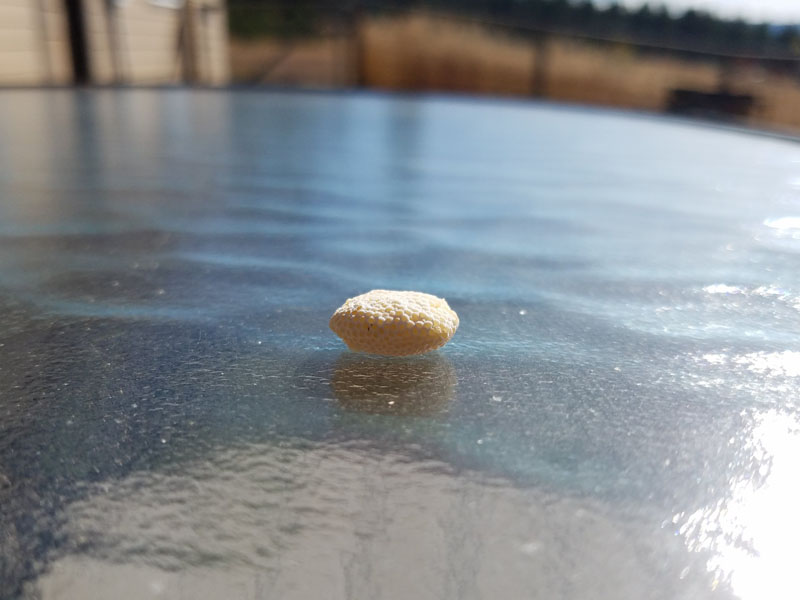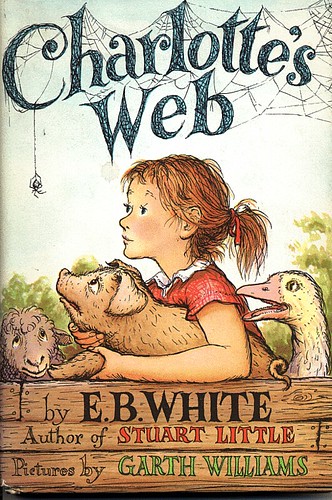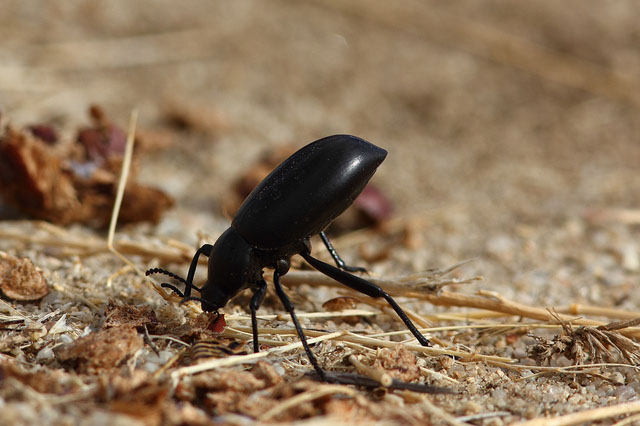Bug (definitions): a small insect; a computer virus; a concealed miniature microphone; to annoy or bother.
Entomology: an insect of a large order distinguished by having mouth parts that are modified for piercing and sucking.
And then there’s the British use of the word “bugger,” but…we won’t go there.
Some bugs are delightful, for example lady bugs, a beautiful red-with-black-dots beetle. I’ll never forget my amazement one autumn at turning over a large boulder high in the Cascade mountains to discover a huge collection of lady bugs hibernating there. Hundreds of them. The boulder was quickly replaced. Until that moment, I had no idea they hibernated together, especially so high in the mountains.
Still…bugs. Ugh. Mostly, we prefer to avoid them.
Years ago I took a microbiology course at university. That’s when I realized that we humans and our visual acuity evolved so that we couldn’t actually see the vast majority of bugs – micro bugs – that inhabit our world. If we could, we’d be paralyzed in horror.
But we can see a huge array of larger bugs, including spiders and beetles. They’re bad enough. Lots of phobias are associated with bugs.
I mention those two categories of bugs – spiders and beetles – because they insist on invading my house fairly regularly, making themselves known. Let me share some things I’ve reluctantly learned.

Barn Spider
A year ago this month I spotted this rather large spider creating a cocoon on my sliding door screen. A day later, no spider, just the cocoon. I needed to put the screen in the garage for the winter. A quick internet search revealed the cocoon could be spider food, or eggs.

I didn’t like the idea of a thousand little spiders hatching in my garage, so before moving the screen inside I gently removed the cocoon webbing. I discovered an amazing compact disc of eggs. Feeling bad, I gently placed it in the field grass just beyond my fence (my dog Conall was a little too interested in it).

More research ensued. Turns out it was spun by a garden spider. After laying their eggs, “Females remain close to the cocoon for the next few days in case the threads need repairing. Females die a few days after the egg sac is built. The cocoon will appear unchanged externally while the spiderlings develop for a few months. The offspring emerge in spring and release fine threads of silk from their spinnerets to be carried off by the wind to new locations. Their journey through the air is called ballooning. Wherever each spider drops from the sky will be where its new life begins.” (From www.animaldiversity.org)
How cool is that?
The site also says garden spiders live in grasslands, so I hope these spiderlings can survive in my field, even without their cocoon (which is built to protect them from predators like bees, not necessarily weather). Besides, they’d never get the chance to go ballooning if they emerged in my garage.
A friend, upon hearing this story, mentioned Charlotte’s Web. Yes, I’d read the book as a child, but really didn’t remember much. Another internet search started. From a Wikipedia page on Charlotte’s Web, a summary of the story:

“As the summer passes, Charlotte ponders the question of how to save Wilbur. At last, she comes up with a plan, which she proceeds to implement. Reasoning that Zuckerman would not kill a famous pig, Charlotte weaves words or short phrases in praise of Wilbur into her web, making the barn, and pig, a tourist attraction, with the web believed to be a miracle. At the county fair, to which he is accompanied by Charlotte and the rat Templeton, Wilbur fails to win the blue ribbon, but is awarded a special prize by the judges. Charlotte, by then dying as barn spiders do in the fall, hears the presentation over the public address system and knows that the prize means Zuckerman will cherish Wilbur for as long as the pig lives, and will never slaughter him for his meat. She does not return to the farm with Wilbur and Templeton, remaining at the fairgrounds to die, but allows Wilbur to take with him her egg sac, from which her children will hatch in the spring. […] Wilbur waits out the winter, a winter he would not have survived but for Charlotte. Delighted when the tiny spiders hatch, he is devastated when most leave the barn. Three remain to take up residence in Charlotte’s old doorway. Pleased at finding new friends, Wilbur names one of them Nellie, while the remaining two name themselves Joy and Aranea. Further generations of spiders keep him company in subsequent years.”
From the Wikipedia page for the barn spider: “Araneus cavaticus, commonly known as the barn spider, is a common orb-weaver spider native to North America. They are around three-quarters of an inch (20 mm) in length and are usually yellow and brown in color. They often construct their webs in wooden human structures, hence their common name. The species is notable for being the basis for the character Charlotte in the book Charlotte’s Web by American writer E. B. White.”
Have I mentioned how much I love going down these sorts of rabbit holes, learning interesting things about the creatures I find all around me? Forgive me, indulge me.
If I’m honest, I’d far rather have my home host barn spiders than stink bugs.
Stink Bugs
Stink bugs are aptly named. When threatened, they emit an awful order from their rear ends, which they lift into the air for maximum propulsion. Think the worst human or dog fart you’ve smelled, times ten. It’s hard to describe other than the odor is metallic and sharp and makes you want to run and find clean air to breathe. The odor lingers for hours, even days.

Upon moving to Idaho – we didn’t have stink bugs in western Washington where I grew up – I endured a learning curve regarding stink bugs.
Dilemma (definition): a situation in which a difficult choice has to be made between two or more alternatives, especially equally undesirable ones. (Oxford Dictionary.)
Normally, seeing an unwanted bug in the house, there’s no dilemma involved. Simply remove said bug as quickly as possible. But the first time I saw a beetle in my house, using a tissue to pick it up for disposal, I was introduced to the “stink” part of stink bug. Much googling ensued, trying to determine what the hell just happened.
The next stink bug was spotted while vacuuming. “Easy,” I thought, “just vacuum it up with the dog hair and it’s gone!” Oh, how naive I was. That stink bug got its revenge by emitting its gas while being suctioned into the vacuum, which then got released in the vacuum exhaust, magnifying the stink’s dispersal through my house exponentially.
I do learn from experience. I haven’t made that mistake again.
Now my favored method for stink bug removal: a glass and a stiff, folded magazine page. Cover and contain stink bug with glass, then slide magazine page underneath. Lift bug contained in glass and page off floor, take outside, fling contents of glass – the bug – as far from house as possible and hope it doesn’t find its way back inside. Rinse and put glass in dishwasher just in case there’s any stink gas inside.

This past week, though, I was again presented with a stink bug dilemma. While using a bathroom in my house, I heard an odd, faint scratching sound. I wondered if one of the mice that tries to make my garage its home had found its way to the space between the interior wall and the outside siding. Returning to said bathroom later that day, I again heard the faint scratching sound. Investigating further, I discovered a stink bug trying to enter the room through a small fault in the concrete floor where it joins the wall. The bug was stuck.

I watched it trying with all its might to complete its ingress to the bathroom. But it was truly stuck. Its flailing front legs simply couldn’t gain enough purchase to pull through the tight spot. They scratched against the concrete floor, trying, trying. Or maybe it’s body was just too thick to pass through the space between wall and floor.
What to do? I knew that any interference on my part would result in a cloud of stink bug stink, although I did briefly consider that maybe said stink would remain between wall and siding. I wasn’t willing to risk finding out if my theory was correct.
I chose to ignore the situation for the time being, let it play out naturally.
Hours later, upon returning from an errand, I smelled that unmistakable stink bug smell in the house. It was coming from that bathroom.
Checking, I saw that the trapped stink bug was still moving its legs, if barely, and only because I poked it with some tweezers to determine if it was still alive.
Knowing it’s time was closing, it must have deployed its remaining stink bomb abilities in one last “Fuck this!” message to the universe. I, sadly, was it’s closest recipient.
I finally took the tweezers and tried to pull the beetle through the space into the bathroom. Sadly for the beetle, it was so stuck that only its front half came in. I felt bad, but was relieved there wasn’t another stink bomb to suffer as a result of my pulling and tugging.
While I love learning about these obscure creatures, at least in the case of the stink bugs I wish they’d keep their distance so I didn’t have to work with them one-on-one.


I’m probably a weirdo, but I’ve always liked bugs. Finding a new insect in the garden always makes me smile.
Did you know the inspiration for Charlotte’s Web barn is here in Maine? It sold a few years ago…
https://www.usatoday.com/story/life/books/2017/08/03/eb-whites-charlottes-web-maine-farm-sale/535345001/
LikeLike
You? A weirdo? I hope so; makes your own blog posts so interesting and funny! I didn’t know that White wrote the book while living on that beautiful farm in Maine, but I do now; thank you for that link.
LikeLiked by 1 person
Thanks for the mention of Charlotte’s Web, one of my favorite childhood stories. The saddest moment in the book is when Charlotte has to explain to Wilbur that she must inevitably die, and that she’ll never see her children.
LikeLike
I know I read the book as a child, but all I remember is that it made me very sad, so I never read it again. I probably should.
LikeLiked by 1 person
It’s stink bug time in Pennsylvania right now. They’re all coming in trying to keep warm. I find that if I grab them by the edges like you might pick up a penny, they rarely emit their scent. Then I just flick them outside , which they must see as a challenge because they seem to find their way back in again.
LikeLike
You’re braver than I am, Jeff; I prefer to not touch them!
LikeLike
[…] Stink bugs somehow find access points through my home’s foundation. Of all the bugs that invite themselves into my home, stink bugs are the most unwelcome. After learning the hard way my first year living here to not step on them, pick them up in a tissue, or vacuum them – all those methods of removal lead to them emitting a defensive fog of odor that can take hours, even days, to dissipate – I came up with the glass + paper method of removal. The glass captures the gas they emit when in defense mode, startled by being captured, until I can take them outside and fling them over the fence and into the field grass. […]
LikeLike